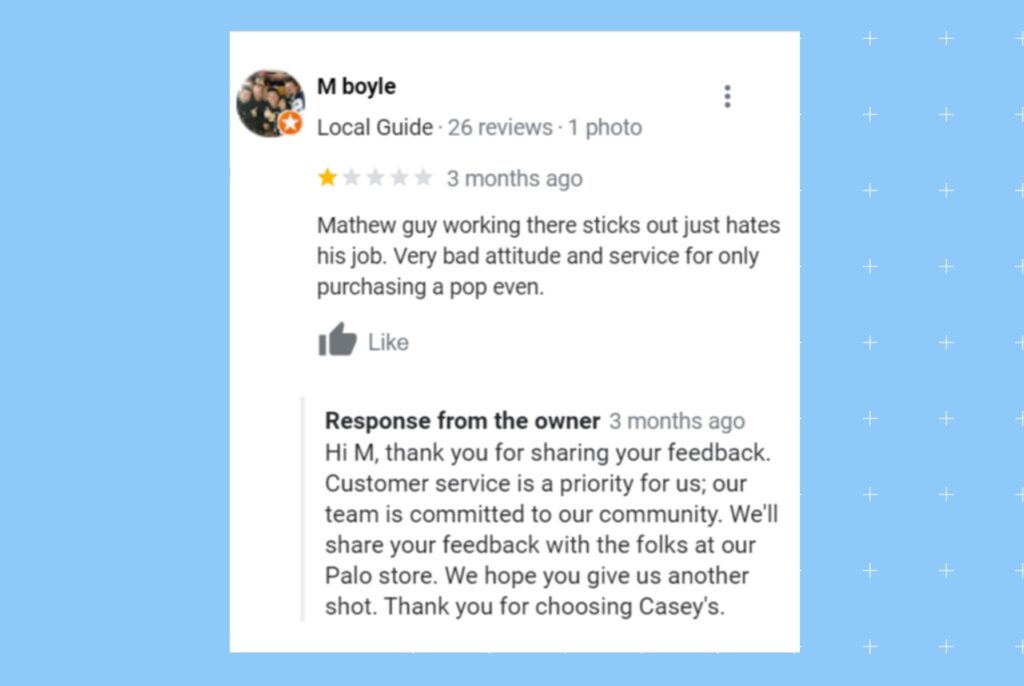According to a Birdeye survey, customers check online reviews 68% of the time before engaging with a local business.
Online reviews wield immense power. Yet, lurking amidst the genuine feedback are deceptive whispers—fake reviews. They can tarnish your image and mislead customers.
This makes it super important for you to showcase positive reviews and filter fake reviews to safeguard your brand’s integrity.
To make your brand reputation management yield results, this blog explores the tools, tactics, and strategies so that you can know how to combat fake reviews.
Table of contents
- What are fake review checkers?
- Why you might be getting fake reviews?
- Benefits of using fake review checker & why businesses need it
- How to spot fake reviews – 5 common signs
- Top fake review checker tools you can trust
- Are fake reviews illegal?
- Different types of fake reviews and how they are generated
- 5 signs a Google review might be fake
- How to report fake negative Google reviews?
- Are negative reviews fake reviews?
- Complement fake review checkers effectively with Birdeye platforms
What are fake review checkers?
Fake review checkers are tools or services designed to identify and flag potentially deceptive reviews online. This helps businesses and consumers maintain trust in online testimonials.

Why you might be getting fake reviews?
If you’ve noticed a surge in suspicious reviews, understanding ‘the why’ is crucial. Here are a few explanations we found why you might be getting fake reviews:
1. Competitive interference
Competitors seeking an unfair advantage might post fake negative reviews to damage your business’s reputation.
2. Disgruntled people
Unhappy customers or employees might use fake reviews as a form of retaliation or to express grievances anonymously.
Looking to ways on how to deal with difficult customers? Here are the 14 steps.
3. Online trolling or mischief
Some individuals engage in online mischief, posting fake reviews without a genuine connection to your business.
4. Incentivized reviews gone wrong
Offering incentives for reviews may lead to misuse, with individuals exploiting the system to post fake positive or negative reviews.
5. Automated or bot-generated reviews
Malicious bots can be programmed to leave fake reviews at scale, indiscriminately targeting businesses.
6. Lack of review verification measures
If your review platform lacks robust verification measures, it becomes easier for fake reviews to go undetected.
7. Failure to manage online reputation
Businesses neglecting their online reputation may become more susceptible to fake reviews, as they may not actively monitor and address such issues.
Pro tip: Use Birdeye’s Review platform to centralize review monitoring, generation, and marketing from various platforms for a unified view.
It helps you to:
- Automate review requests
- Monitor reviews on 200+ sites
- Translate reviews and responses with AI
- Use AI to personalize your review replies
- Use positive review examples to respond
- Get real-time alerts whenever you receive a new review
- Gain insights into how your online reputation compares with others
Identifying the source helps you take targeted actions, protects your business’s online reputation, and prevents fake reviews.

Benefits of using fake review checker & why businesses need it
Businesses need a fake review checker because it offers many benefits. Here are a few of them:
1. Maintaining credibility
By employing a fake review checker, your business gains the ability to sift through and filter out deceptive reviews, ensuring that the ones showcased are genuine. This enhances the credibility of your online reputation.
Must-read: How to identify fake dental reviews
2. Informed decision-making
The insights fake review checkers provide empower your business to make informed decisions based on authentic customer feedback.
Understanding your strengths and areas for improvement becomes more precise, guiding strategic choices that resonate with your customer base.
FTC landmark judgment bans fake reviews and celebrity testimonials On August 14, 2024, the Federal Trade Commission (FTC) took a significant step to combat the growing prevalence of fake reviews and testimonials online. Key provisions of the rule: • Fake reviews and customer testimonials: Prohibits businesses from creating, selling, or buying fake reviews, including AI-generated ones or those written by people without experience. • Incentivized reviews: Bans businesses from offering incentives for reviews with a particular sentiment. • Insider reviews: Prohibits businesses from disseminating reviews written by company insiders or their relatives without clear disclosure. • Review websites: Prevents businesses from misrepresenting the independence of review websites they control. • Review suppression: Prohibits businesses from using threats or intimidation to suppress negative reviews and requires transparency about review gating practices. • Fake social media indicators: This law prohibits selling or purchasing fake social media indicators that misrepresent a person's influence.
3. Protecting reputation
Fake review checkers allow your business to proactively manage its brand strategy. Identifying and addressing potential issues before they escalate helps maintain a positive image, demonstrating responsiveness and commitment to customer satisfaction.

4. Customer trust and loyalty
Authenticity matters to customers. A fake review checker helps you showcase real customer feedback, building trust and fostering loyalty.
When consumers perceive your business as transparent and genuine, they are more likely to become repeat customers and brand advocates.
5. Efficient resource allocation
Save time and resources by focusing on legitimate reviews that impact your business. A fake review checker streamlines the review management process, allowing you to allocate resources more efficiently toward areas that genuinely contribute to your business growth.
6. Positive online presence
Ensuring that your online reviews accurately reflect your customers’ positive experiences contributes to a favorable online presence. A fake review checker aids in cultivating and promoting this positivity, influencing the perception of your brand in the digital space.
Cultivating Trust Online: Use Fake Review Checkers to Improve Your Online Reputation
Want to see the impact of Birdeye on your business? Watch the Free Demo Now.
How to spot fake reviews – 5 common signs
Fake reviews are found everywhere, including Amazon, Facebook, and Google. Recognizing them is essential for maintaining the integrity of your online reputation.
Here are the five common signs to look out for:
- Generic language
- Patterns in the reviewer’s behavior
- Extreme positivity or negativity
- Excessive use of keywords or phrases
- Conflicting information within the review
A keen eye coupled with reliable fake review checker tools helps you maintain the integrity of your online reviews.

Jump to the ‘5 signs a Google review might be a fake’ section to know more about it
Top fake review checker tools you can trust
From advanced algorithms to AI-powered solutions, these top fake review checker tools in 2023 can help businesses and consumers combat deceptive online reviews:
1. Fakespot
What it is: A renowned fake review detector from Mozilla, it is known for its algorithmic approach, analyzing patterns and language.
What makes its fake review-checking believable:
Whether you want to analyze fake reviews on Amazon, Walmart, or Best Buy, Fakespot assesses patterns, language use, and reviewer behavior, providing users with a reliable analysis of the authenticity of online reviews.
2. ReviewMeta
What it is: ReviewMeta is a fake review spotter tool that evaluates and filters product reviews on major eCommerce review sites.
What makes its fake review-checking believable: ReviewMeta’s thorough analysis focuses on specific review patterns. This ensures a trustworthy assessment of the authenticity of customer feedback and minimizes the impact of fake reviews.
3. Birdeye’s Review management
What it is: Though not categorically a fraudulent detector tool, Birdeye’s review management platform incorporates fake review checking into a broader review management platform.
It reviews over 200 review sites and finds and flags spam automatically, so you don’t have to.
What makes its fake review-checking believable: Birdeye combines AI with human intelligence, providing a holistic approach to detecting fake reviews while offering businesses a complete suite.
Like how fake review checkers safeguard your online reputation, explore how Birdeye’s transparent pricing ensures you get effective solutions without hidden costs.

Are fake reviews illegal?
Deceptive practices like posting fake reviews are indeed illegal. Fake reviews can have serious consequences for businesses as they violate consumer protection and false advertising laws.
Employing a trustworthy fake review checker becomes a proactive measure to combat illegal practices.
Different types of fake reviews and how they are generated
Fake reviews, generated through various methods such as AI, incentivization, and review manipulation services, have become increasingly prevalent. These deceptive tactics can have severe consequences for businesses, including:
- Damaged reputation about a business’s quality
- Lost sales and customer trust
- Legal consequences such as going out of business and a hefty penalty
Recently, a plastic surgeon manipulated positive reviews to gain a strong online reputation. When the law uncovered that he was review-gating, manipulated images, and forced patients to sign illegal non-disclosure agreements (NDAs), it penalized him and his company with $5 million.
Businesses must identify and combat fake reviews to protect their brand. By understanding the various types of fake reviews and the tactics used to generate them, businesses can take proactive steps to mitigate their risks.
Here are some of the most common types:
1. AI-generated reviews
- How they are generated: These reviews are created using artificial intelligence algorithms that can mimic human writing styles and patterns.
- Characteristics: Often lack the nuance and personal touch of genuine reviews. May contain inconsistencies or grammatical errors.
2. Incentivized reviews
- How they are generated: Businesses may offer incentives, such as discounts, free products, or cash, to encourage consumers to write positive reviews.
- Characteristics: Can be biased and may not accurately reflect the true experience of the reviewer.
3. Competitor-driven reviews
- How they are generated: Competitors may hire third-party companies or individuals to write negative reviews about their rivals.
- Characteristics: Often focus on exaggerating negative aspects or making false claims.
4. Insider reviews
- How they are generated: Reviews written by company insiders, such as employees or executives, who may have a vested interest in promoting the business.
- Characteristics: Can be biased and may not accurately represent the experiences of external customers.
5. Bot-generated reviews
- How they are generated: Automated software programs, or bots, can generate large quantities of reviews quickly.
- Characteristics: Often lack the depth and detail of human-written reviews. May contain repetitive language or patterns.
6. Review exchange networks
- How they are generated: Participants in these networks agree to exchange reviews, often to boost each other’s ratings.
- Characteristics: Reviews may lack authenticity and may not reflect genuine experiences.
7. Review manipulation services
- How they are generated: Companies or individuals offer services to manipulate review ratings by creating fake reviews or removing negative ones.
- Characteristics: Can be difficult to detect, as they may involve sophisticated techniques to avoid detection.
5 signs a Google review might be fake
Google reviews are the foundation of your business’s online reputation. Consumers trust Google reviews more than their customers’ testimonials.
However, the prevalence of fake reviews has become a challenge, making distinguishing between authentic and fraudulent reviews essential.

Apart from the common signs to spot fake reviews mentioned above, here are five signs you’ll notice if you receive a fake review on Google:
- Reviewer anonymity
- Unusual reviewer activity
- Similar language across reviews
- Unverified purchase claimsUnverified purchase claims
- Lack of response to inquiries
Let’s discuss these in detail.
1. Reviewer anonymity
An anonymous reviewer raises suspicion as genuine users usually provide a name or photo. This lack of identity makes it challenging to validate the review’s credibility, leaving room for potential deception.
As of May 28, 2018, leaving an anonymous Google review is no longer possible. Google has even deleted all previously posted anonymous reviews.
2. Unusual reviewer activity
Sudden spikes in review activity or a surge in reviews within a short time frame may indicate a coordinated effort to deceive. Authentic reviews tend to be more sporadic, reflecting genuine customer experiences.
3. Similar language across reviews
Repeated phrases in multiple reviews often indicate fake ones. A similar language tricks readers into thinking the reviews are from many real customers with different experiences. This creates an illusion of legitimacy and deceives readers.
4. Unverified purchase claims
Reviews claiming a purchase without verification, especially on Google Business profiles, are red flags. Genuine reviews often include details about the purchase, while fake reviews don’t.
Unverified claims deceive potential buyers as they are often fabricated by presenting fictional experiences.
5. Lack of response to inquiries
Genuine reviewers are typically willing to engage and provide additional information if asked. A lack of response to inquiries may signal that the reviewer is not genuinely invested in sharing their experience, potentially indicating deceptive motives.
How to report fake negative Google reviews?
Now you know all the ten ways to identify a fake review on Google and other third-party review sites, taking action against fake negative reviews is essential.
You can use Google Maps or Google Search to report an inappropriate review for removal. Here’s how to report them effectively:
Flag a review in Google Maps in 3 steps
1. Open Google Maps
2. Go to your Google Business profile
3. Locate the review you’d like to report
Click More (with three dots) and then select ‘Flag as inappropriate.’
Flag a review in Google Search in 3 steps
1. Find your Google Business Profile
2. Navigate to the “Reviews” section and find the fake negative review you want to report.
3. Click More (with three dots) ‘Report review’ and then select ‘Flag as inappropriate.’

Are negative reviews fake reviews?
No, negative reviews are not inherently fake reviews. Negative reviews can be genuine dissatisfaction from customers who have had less-than-optimal experiences with a product, service, or business.
These reviews often provide valuable feedback that businesses can use to identify areas for improvement.
However, it’s essential to distinguish between authentic negative reviews and fake negative reviews. Fake negative reviews are intentionally deceptive and fabricated to harm a business’s reputation. They may come from competitors, disgruntled individuals, or even automated systems.
Use a fake review checker to address each appropriately.

FAQs about fake review checkers
Here are the common signs:
1. Generic language
2. Extreme positivity or negativity
3. Reviewer anonymity
4. Patterned language
5. Unusual reviewer activity
6. Similar language across reviews
7. Inconsistent details
8. Overuse of keywords
9. Unverified purchase claims
10. Lack of response to inquiries
Fake review checkers use algorithms and pattern recognition to analyze reviews and identify potential instances of deception.
No, negative reviews can be genuine expressions of dissatisfaction. Fake negative reviews are intentionally fabricated to cause harm.
While no tool is foolproof, reputable fake review checkers with advanced algorithms provide reliable insights. Combining technology with human review is the most effective approach.
While fake review checkers can highlight potential fakes, removal depends on platform policies. Most platforms provide a reporting mechanism for reviewing disputes.
Yes, businesses can pursue legal action against individuals or entities involved in posting fake reviews, citing consumer protection laws.
While challenging, concerted efforts from businesses, consumers, and technology can significantly reduce the prevalence of fake reviews.
Complement fake review checkers effectively with Birdeye platforms
Enhance your online reputation management strategy by complementing fake review checkers with Birdeye’s comprehensive platforms. Birdeye provides a holistic solution for multi-location businesses, from review monitoring to customer engagement.

Originally published









